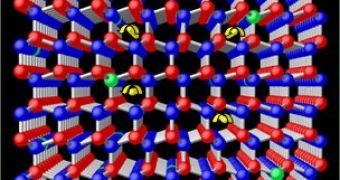Graphene may very well be the material of the future and is currently of high scientific interest due to its unusual electronic properties, explains Allen Goldman, a scientist at the University of Minnesota in Minneapolis.
Along with Masaya Nishioka, also at the University of Minnesota, he created a spin valve made of graphene, which could provide new insights into spin transport in this futuristic material.
For the past years, graphene was considered to be the best candidate for replacing silicon in the competition for miniaturization of the computer industry and scientists around the world are anxious to see if graphene will be able to solve the problem of circuits being stamped from its large wafers, much as they already do with silicon and that of the small pieces actually working.
The graphene spin valve is not the only discovery of the two scientists, they also observed a magnetic field controlled resistance change of 0.39%. "It's not a huge effect," Goldman admits, "but it is a step."
He also explained that even if this is not the first spin valve ever produced, it is the first that is "reasonably well characterized." He continued by saying that "this isn't a huge breakthrough, but it is an incremental step in understanding graphene, and also a step in understanding whether this material has use in spin dependent electronics."
"Spintronics" is an emerging field that deals with the use of the 'spin' of an electron for storing, processing and communicating information and it has known an important recent advance that may one day manifest itself in a new generation of smaller, smarter and faster computers, sensors and other devices.
It relies on the spin of an electron, which makes it behave like a tiny magnet and scientists hope that this spin could be used to encode information in electronic circuits, computers and virtually every other electronic gadget, which will become smaller, faster and less power hungry.
Practical applications for spintronic devices and spin valves, most of all, are presently limited mass-storage systems. But now, Goldman and Nishioka's spin valve uses magnetic thin films to control the resistive state of graphene: "We're talking about a memory device that doesn't have to be refreshed, and that is not volatile."
Explaining the production process, Goldman wrote that "We take a substrate of silicon, which is doped and coated with silicon oxide. Then we place graphene flakes on the surface, and after selecting a suitable flake, fabricate a pair of cobalt electrodes to contact the flake. We can then switch the resistive state of the flake by controlling the relative orientations of the magnetizations of the electrodes."
This could be a very important step in the field of spintronics that may lead the way to new and reliable computing applications.

 14 DAY TRIAL //
14 DAY TRIAL //